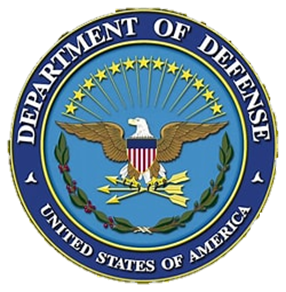CMMC Compliance Simplified: What You Need to Know in 2025
- Gold Comet

- May 29, 2025
- 5 min read
If you’ve investigated the requirements by now, you’ve learned that CMMC compliance has become a central pillar for organizations operating within or contracting with the U.S. Department of Defense (DoD).

You’ve also discovered that meeting the requirements for CMMC (Cybersecurity Maturity Model Certification) is neither a quick nor easy process.
The CMMC has been designed through several modification reviews to result in a certification process that ensures contractors and subcontractors meet specific cybersecurity maturity standards to protect sensitive data—particularly Controlled Unclassified Information (CUI).
This post explains and hopefully simplifies the complex landscape of CMMC compliance in 2025, helping you understand the levels, requirements, and benefits of compliance so you can position your organization for success in the Defense Industrial Base (DIB) environment.
What CMMC Is and Why It Matters

The Cybersecurity Maturity Model Certification (CMMC) is a unified standard implemented by the DoD to assess and enhance the cybersecurity posture of companies in the defense supply chain. Introduced to replace the self-attestation model under NIST 800-171, CMMC requires organizations to demonstrate and validate their cybersecurity practices through third-party assessments.
Why does CMMC matter? CMMC is critically important for protecting the nation’s security. As defense contractors increasingly operate in a digitally and globally interconnected world, the risk of cyber espionage and IP theft has grown. Numerous vulnerabilities can creep into operations where participants in the supply chain have varying levels of data storage and transfer protections. A single cybersecurity breach can jeopardize sensitive projects and critical technologies. CMMC compliance ensures companies handling CUI follow strict protocols to safeguard data, reduce risk, and maintain trust at all points along the supply chain.
Whether you're a prime contractor or a subcontractor, achieving CMMC compliance certification is no longer optional. Without it, you won’t be eligible to compete for many DoD contracts, making it a competitive and strategic necessity.

Levels of CMMC Compliance
CMMC 2.0 defines three distinct levels of cybersecurity maturity, each aligned with specific capabilities, processes, and assessments.
CMMC Level 1 – Foundational
Focus: Basic safeguarding of Federal Contract Information (FCI)
Practices: Basic security practices
Based on: FAR 52.204-21
Assessment: Annual self-assessment
CMMC Level 2 – Advanced
Focus: Protection of Controlled Unclassified Information (CUI)
Practices: Specific practices aligned with NIST SP 800-171
Includes: Access control, incident response, system and information integrity, and more
Assessment: Triennial third-party assessment by a certified C3PAO (Certified Third-Party Assessor Organization) for select contractors, or self-assessment for others
CMMC Level 3 – Expert
Focus: Protecting CUI against Advanced Persistent Threats (APTs)
Practices: Based on NIST SP 800-172
Assessment: Government-led assessments
Understanding which CMMC compliance level applies to your organization depends on the type of information you handle and your role in the DoD supply chain. Companies aiming to work with sensitive data should target CMMC Level 2 compliance as a baseline.
CUI (Controlled Unclassified Information) Explained

CUI, or Controlled Unclassified Information, refers to information that requires safeguarding but isn’t classified. Examples include:
Technical drawings
Engineering blueprints
Proprietary data
Export-controlled data
Legal and financial information related to defense contracts
Although not labeled as "classified," CUI can pose significant national security risks if exposed. Therefore, the DoD requires companies handling CUI to meet strict CMMC standards. This includes securing how CUI is accessed, stored, transmitted, and shared both internally and with external partners.
Failure to protect CUI could not only lead to noncompliance and loss of contracts but also expose your organization to significant reputational and legal risks.
How to Assess Your Compliance Level
Assessing your CMMC cybersecurity posture begins with identifying your data, systems, and risk tolerance. Here are the core steps to help you determine your compliance level:
1. Identify Data Types
First, determine whether your organization handles CUI. If so, you’ll likely be required to comply with CMMC Level 2 or 3.
2. Map Existing Controls to CMMC Requirements
Compare your current cybersecurity controls to the CMMC compliance requirements using gap analysis tools or consulting firms. Pay particular attention to alignment with NIST 800-171 and CMMC NIST 800 171 requirements.
3. Select a Compliance Partner
If you're required to undergo a third-party assessment, find a C3PAO authorized by the Cyber AB (formerly CMMC Accreditation Body) to conduct your official audit.
4. Develop a System Security Plan (SSP)
Your SSP outlines how your organization meets each security requirement, a crucial document for your audit and ongoing efforts to improve and maintain compliance.

5. Build a Plan of Action & Milestones (POA&M)
If there are gaps in your implementation, document them in your POA&M with a timeline for remediation. Make sure you cover all the bases. Any missing or inadequate security element can become a vulnerability.
Cybersecurity Best Practices for CMMC Compliance
Meeting CMMC security compliance requires more than checking boxes—it’s about building a sustainable, secure foundation. The following best practices will help you align with CMMC standards and fortify your organization’s defenses:
1. Implement Multi-Factor Authentication (MFA)
MFA significantly reduces unauthorized access and is a core part of CMMC Level 2 and NIST 800-171 requirements.
2. Control Access to CUI
Enforce the principle of least privilege. You may also know this as Privileged Access Management (PAM). Adherence to this principle ensures that only those who truly need access to controlled unclassified information have it. No need to know, no access granted.
3. Monitor and Log All Activity
Use centralized logging systems and Security Information and Event Management (SIEM) platforms to monitor activity and detect anomalies and keep records of these incidents and lessons learned from both successful and failed remediations.

4. Encrypt Data at Rest and in Transit
Whether storing data to on premise servers or cloud environments, encryption is vital for protecting sensitive data. Best is object level encryption which encrypts every individual data element rather than assigning one encryption key to an entire volume of data.
5. Conduct Regular Risk Assessments
Continually assess your security posture against known threats and adjust policies and tools accordingly. This means you must remain aware of cyber realm developments, particularly maladaptive means used by cybercriminals to infiltrate systems.
6. Train Your Workforce
Human error remains one of the top causes of breaches and not knowing the rules will not suffice as an excuse for failure to meet standards. Train your employees to recognize phishing, social engineering, and to use secure data handling practices.
7. Develop an Incident Response Plan
In the event of a breach or suspicious activity, a documented and tested incident response plan ensures your team can respond quickly and effectively.
8. Work with Trusted Vendors
If you rely on third-party providers for IT services, ensure they meet CMMC compliance solutions criteria and follow NIST CMMC compliance standards. Remember that a supply chain is only as secure as its weakest link. You must ensure that your suppliers must meet and maintain security standards equal to yours.
Benefits Beyond Compliance
While CMMC compliance certification is essential for maintaining eligibility for DoD contracts, its benefits go far beyond just checking the compliance boxes:
1. Enhanced Cybersecurity Resilience
CMMC improves your organization’s ability to detect, respond to, and recover from cyberattacks—an essential capability in a high-threat environment that targets DIB contractors.
2. Greater Marketability
Being CMMC-compliant enhances your organization’s reputation, signaling to potential partners and customers that you prioritize data security and reliability.
3. Competitive Edge
With the implementation of CMMC, prime contractors will seek subcontractors who already meet compliance requirements to avoid operational delays and bottlenecks in their supply chains.
4. Better Vendor and Supply Chain Security
CMMC standards promote consistent cybersecurity practices across your supply chain, reducing third-party risks.
5. Foundation for Broader Compliance
The processes and documentation required for CMMC can help prepare your organization for other regulations, including GDPR, HIPAA, and ISO 27001.

As CMMC standards become more deeply integrated into the U.S. defense contracting ecosystem, your enterprise must begin immediately to understand, assess, and achieve the appropriate CMMC compliance level for your role in the DIB. Consider the compliance process an opportunity to build long-term cybersecurity maturity, reduce organizational risk, and gain a competitive advantage.




Comments